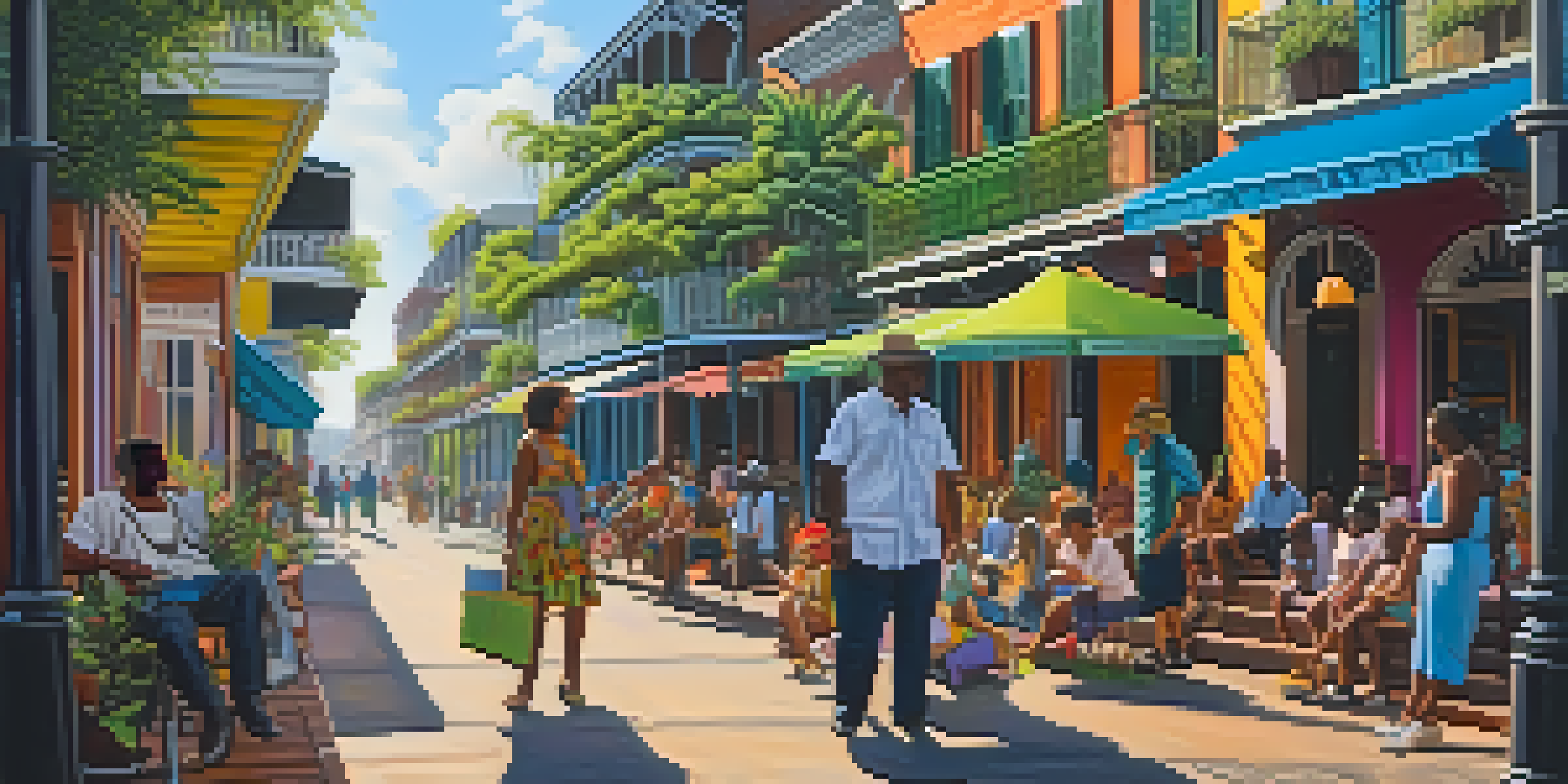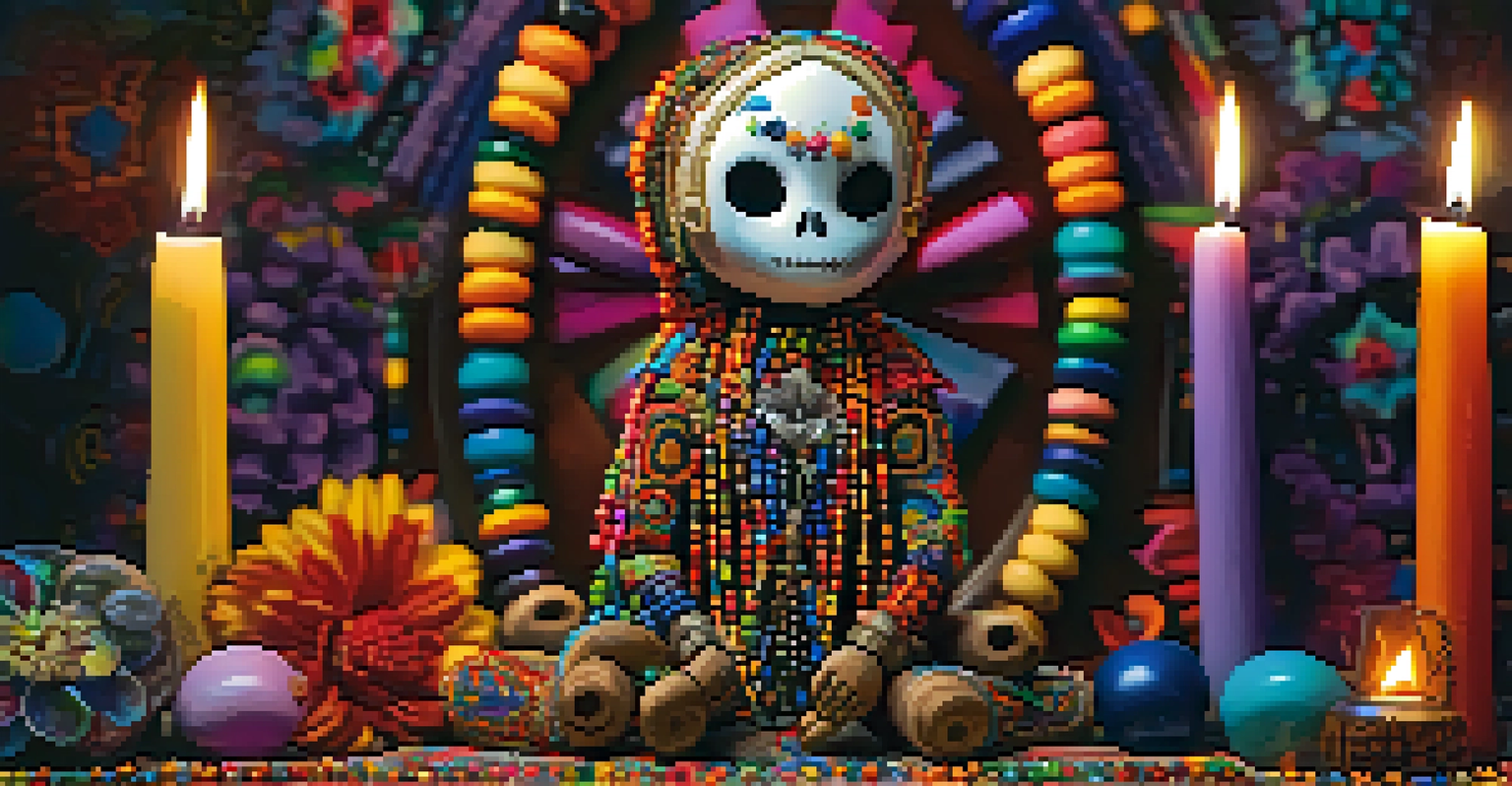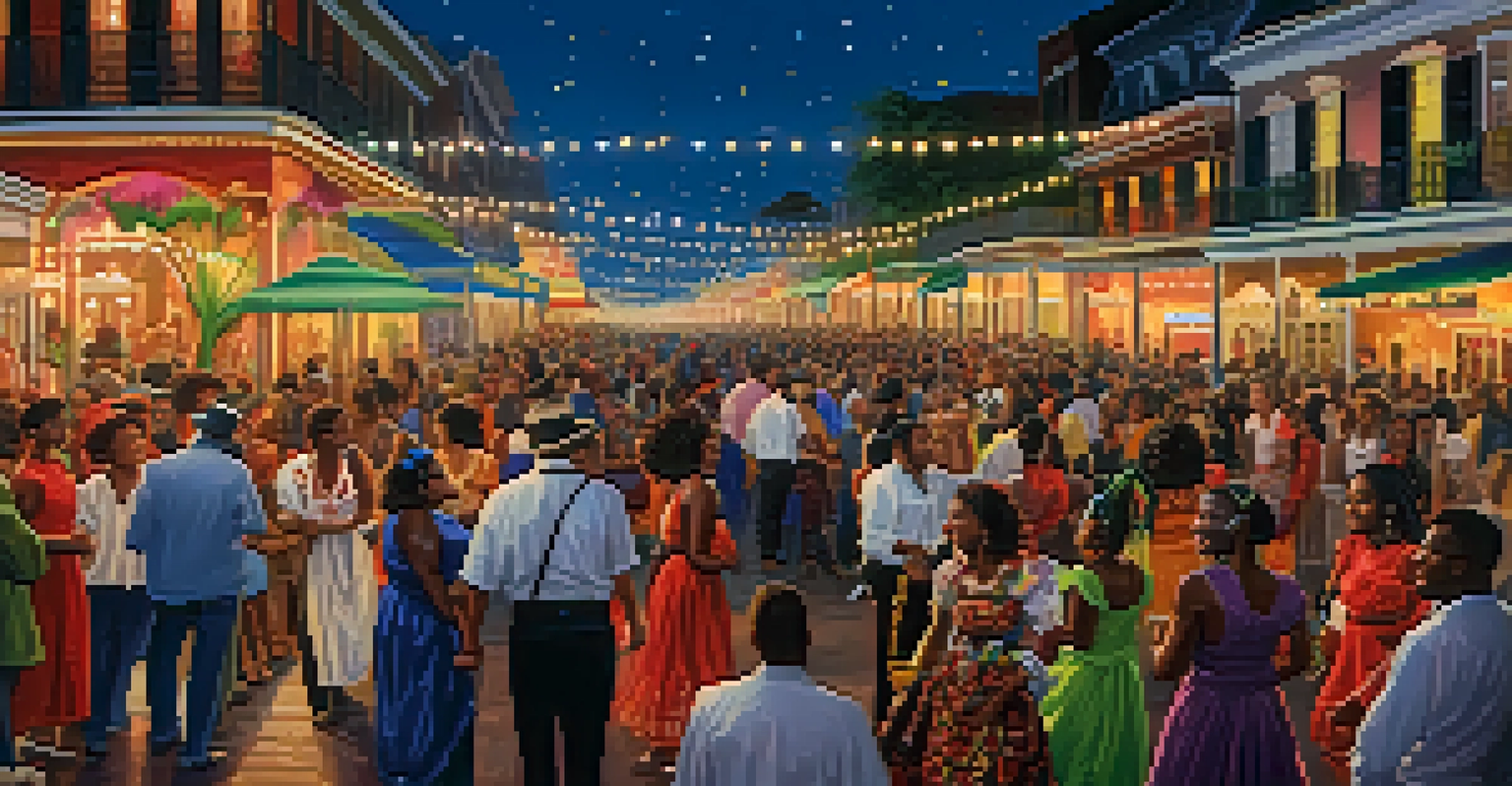The Influence of Voodoo on New Orleans Music and Art

The Roots of Voodoo in New Orleans' Cultural Fabric
Voodoo, often misunderstood, has deep roots in New Orleans' culture, originating from West African traditions. It blends African, French, Spanish, and Creole influences, creating a unique cultural tapestry. This rich heritage has shaped not only religious practices but also the artistic expressions found throughout the city.
Voodoo is not a religion of the devil, but a belief system that is deeply rooted in African traditions and cultural practices.
The vibrant streets of New Orleans reflect this blend, where Voodoo's spiritual elements echo in the rhythms of local music and the colors of its art. Artists and musicians often draw inspiration from Voodoo rituals, symbols, and folklore, creating pieces that resonate with both locals and visitors alike. The city thrives on this dynamic interplay between culture and creativity.
As you stroll through the French Quarter or listen to the sounds of a jazz band, you can feel Voodoo’s presence, reminding us of the powerful connection between spirituality and artistic expression in New Orleans.
Voodoo's Influence on Jazz and Blues Music
Jazz and blues, two of New Orleans' most famous musical genres, are heavily influenced by Voodoo practices. The improvisational nature of jazz mirrors the spontaneous rituals found in Voodoo ceremonies. Musicians often incorporate elements of storytelling, spirituality, and emotion, much like the narratives told through Voodoo.

Artists like Louis Armstrong and Billie Holiday have infused their music with themes that resonate with Voodoo's mystique. Songs often explore love, loss, and the supernatural, drawing listeners into a world that transcends the ordinary. This connection to Voodoo adds depth and complexity to the music, inviting listeners to experience more than just sound.
Voodoo's Cultural Impact in Art
Voodoo influences New Orleans' art scene, intertwining traditional symbols with contemporary expression.
Furthermore, the call-and-response pattern found in Voodoo chants can be traced in the interactions between musicians and their audiences. This cultural exchange creates a communal experience, making music a living expression of Voodoo's influence.
Symbols and Imagery in New Orleans Art
The visual arts in New Orleans are rich with symbols drawn from Voodoo, such as the veve, a symbol used to invoke spirits. Artists often incorporate these designs into paintings, sculptures, and street art, creating a visual dialogue between the viewer and the spiritual realm. These symbols serve as a bridge, connecting everyday life to the supernatural.
Music is the shorthand of emotion, and Voodoo's influence on jazz and blues is a reflection of the spiritual journeys we all take.
For instance, artists like George Rodrigue famously featured the Blue Dog, which became a symbol of the mystical and magical aspects of Louisiana culture. By blending Voodoo iconography with contemporary themes, these artists keep the tradition alive while appealing to modern sensibilities. This fusion highlights the ongoing relevance of Voodoo in the artistic landscape.
Moreover, local galleries often showcase works that reflect Voodoo beliefs and practices, inviting audiences to explore the depth of this cultural influence. The art becomes a canvas for storytelling, where the past and present collide in vibrant displays.
The Role of Voodoo in Performance Art
Performance art in New Orleans often incorporates Voodoo elements, creating an immersive experience for the audience. Ritualistic gestures and storytelling play a crucial role, inviting viewers to engage with the spiritual aspects of the performance. These shows are not merely entertainment; they serve as a means of connecting to the rich cultural heritage of the city.
Artists like the Voodoo Queen and local theater groups bring Voodoo stories to life through dramatic reenactments and dance. The performances often feature traditional music and costumes, creating a sensory experience that transports audiences to another realm. This blend of art and spirituality highlights the importance of Voodoo in the city's cultural identity.
Voodoo's Role in Music Genres
Jazz and blues music in New Orleans draw heavily from Voodoo practices, enhancing emotional storytelling.
Furthermore, these performances foster a sense of community, as locals and visitors alike come together to celebrate and honor the traditions of Voodoo. It reinforces the idea that art is not just a personal expression but a collective experience that transcends boundaries.
Festivals Celebrating Voodoo Culture
Festivals in New Orleans, such as the Voodoo Music + Arts Experience, celebrate the intersection of Voodoo, music, and visual art. These events showcase local artists and musicians, creating a vibrant atmosphere filled with creativity. Attendees can participate in workshops, performances, and art displays that highlight the influence of Voodoo on the city's cultural scene.
The festival environment encourages exploration and interaction, allowing participants to immerse themselves in the traditions of Voodoo. From learning about its history to experiencing live performances, festivals act as a hub for cultural exchange and appreciation. This communal celebration fosters a deeper understanding of Voodoo beyond its stereotypes.
Through these gatherings, the essence of Voodoo is kept alive, continuously inspiring new generations of artists and musicians. The festivals serve not only as entertainment but also as a reminder of the importance of preserving cultural heritage.
The Contemporary Renaissance of Voodoo Art
Recently, there has been a resurgence of interest in Voodoo art among contemporary artists in New Orleans. This renaissance reinterprets traditional Voodoo symbols and themes, blending them with modern techniques and materials. Artists are using their platforms to explore and express the complexities of identity, spirituality, and cultural heritage.
For instance, some artists are creating installations that challenge the misconceptions surrounding Voodoo, inviting dialogue and understanding. By showcasing the beauty and depth of Voodoo, these artists contribute to a more nuanced narrative that goes beyond the sensationalism often associated with it. This shift in perspective allows for greater appreciation of the culture.
Festivals Celebrate Voodoo Heritage
Festivals in New Orleans, like the Voodoo Music + Arts Experience, highlight the cultural significance of Voodoo through art and music.
Moreover, galleries and exhibitions dedicated to Voodoo art are popping up across the city, providing spaces for these contemporary voices to be heard. This growing visibility is crucial in ensuring that Voodoo continues to inspire and influence future generations of artists.
Understanding Voodoo's Legacy in New Orleans
The legacy of Voodoo in New Orleans is deeply intertwined with the city's music and art. It serves as a reminder of the resilience and creativity of a community shaped by its history. By understanding Voodoo's influence, we gain insight into the broader narrative of New Orleans, where culture, spirituality, and creativity coexist harmoniously.
As we delve into the stories behind the music and art, we uncover a rich tapestry woven with threads of tradition and innovation. Voodoo's presence is felt in the rhythms of jazz, the colors of street art, and the performances that captivate audiences. This interconnectedness highlights the importance of recognizing and honoring the past while embracing the future.

Ultimately, Voodoo's influence on New Orleans music and art is a testament to the power of culture in shaping identities. It encourages us to celebrate diversity, foster understanding, and appreciate the profound connections that art can create in our lives.